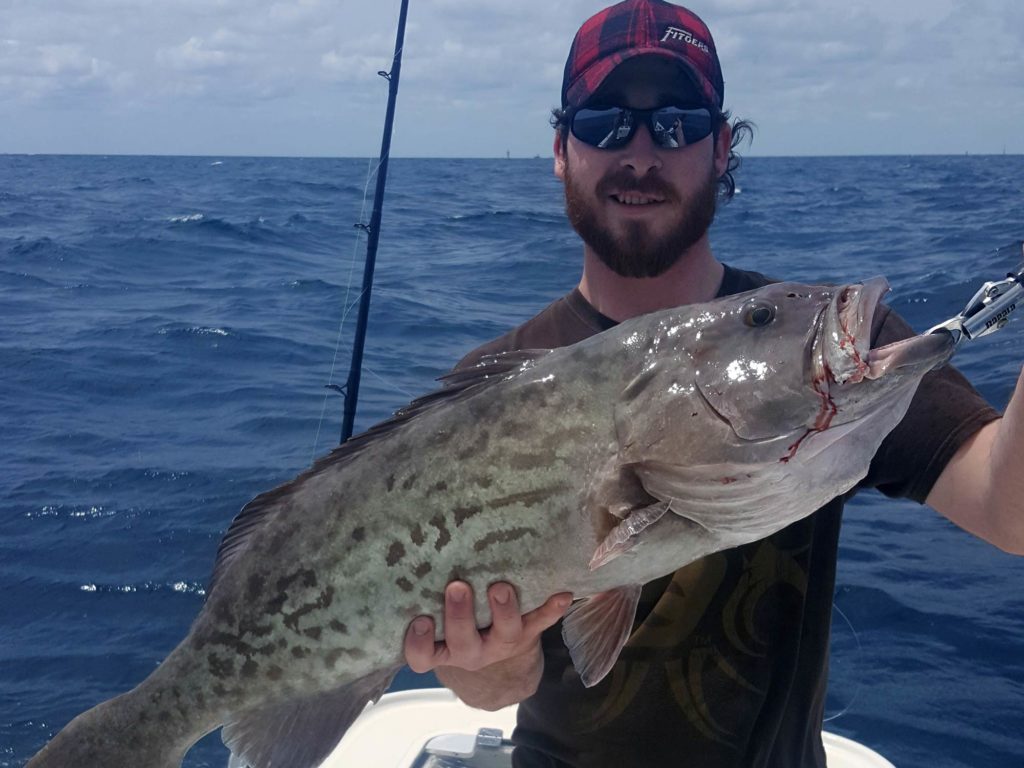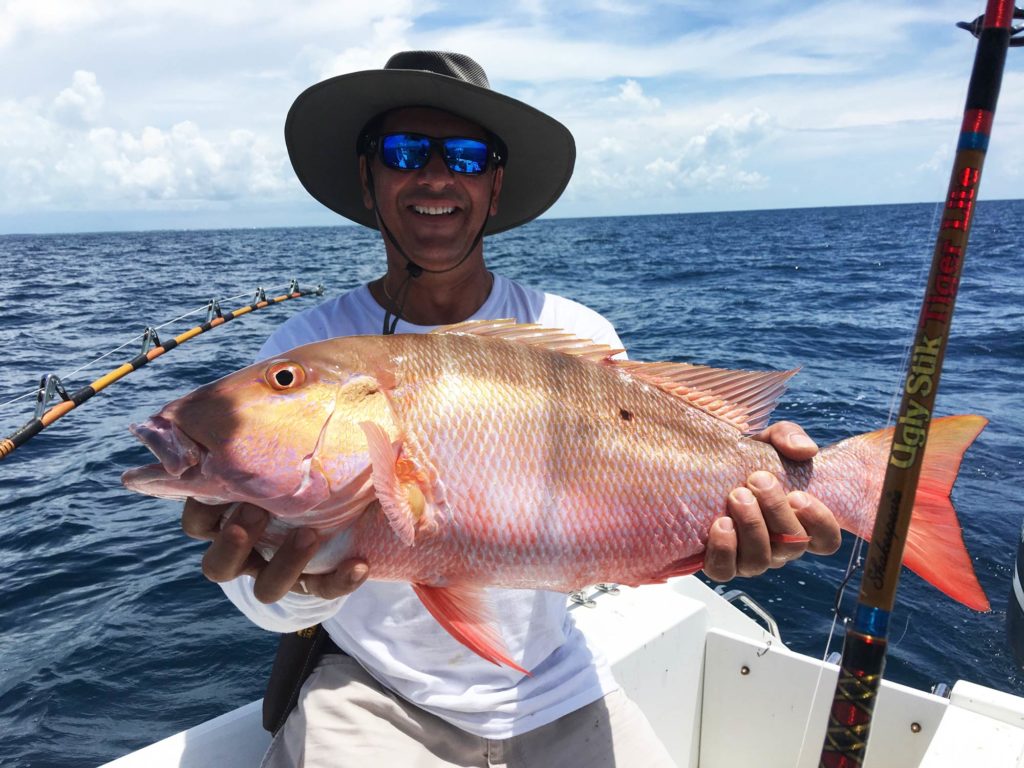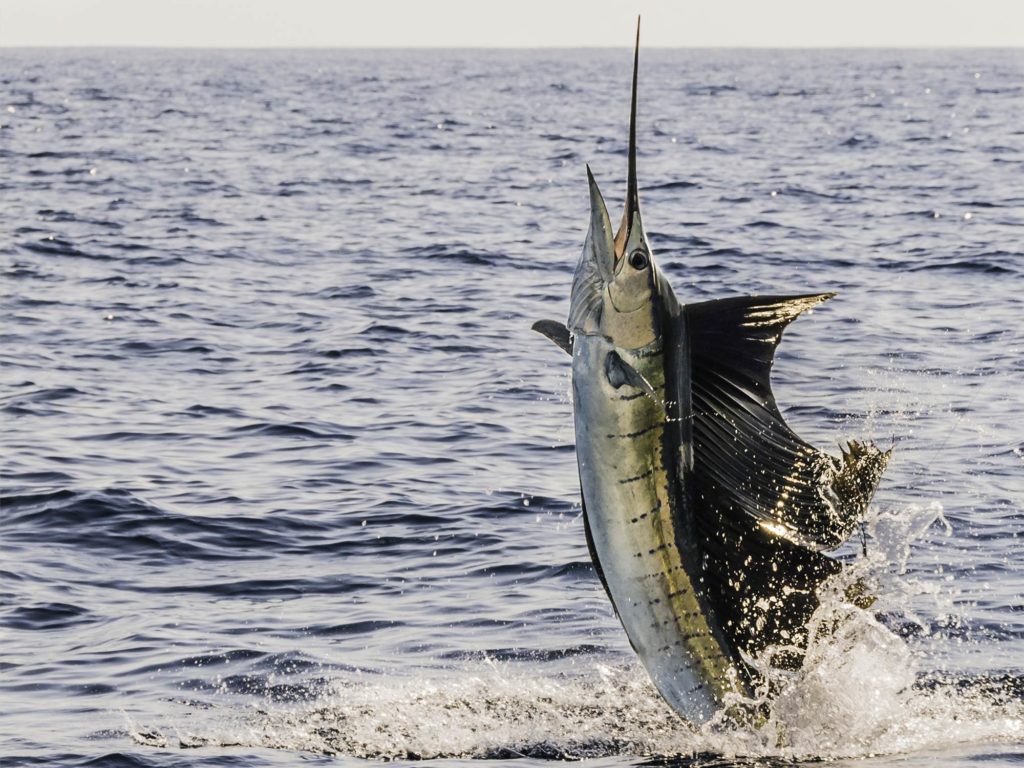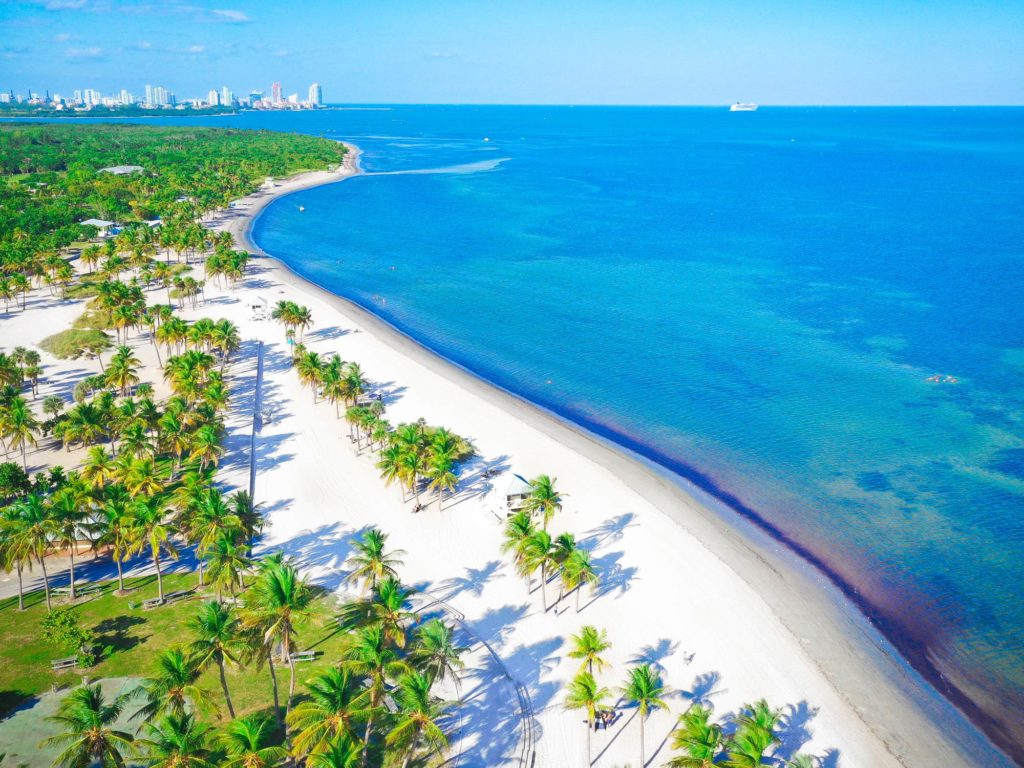If you were to compile a list of the most fun and popular places in the US, Miami would undoubtedly be at the top of it. With perfect temperatures even in the middle of winter, fabulous nightlife, and white-sand beaches as far as the eye can see, what’s not to like? Still, there’s one thing that makes the “Magic City” stand out even more – deep sea fishing in Miami is legendary.
Millions of tourists flock here every year, a good part of them anglers, eager to explore these prolific waters. No matter the species you’d like to catch or your level of expertise, Miami has something in store for you!
Deep Sea Fishing in Miami – Top Catches
Where do we start? The main appeal of deep sea fishing out of Miami is the possibility to catch, well, everything. This is no exaggeration – here, the A-listers hang out only a couple of miles from the coast, in the warm Gulf Stream.
Anything from Billfish and other trophy-sized pelagics to bottom dwellers is fair game. Here are some of the top catches that deep sea fishing in Miami can offer you.
Sailfish – The One That Everybody Wants
Not only is Sailfish the official saltwater fish of Florida, but it’s also the most coveted catch for big game fishers. They’re the fastest fish in the ocean, strong and famous for their fighting abilities.

In the winter months, from November–April, you can find huge numbers of Sailfish, prowling for bait fish, which they follow to the Miami coast. Their agility and speed are unmatched, which makes them thrilling prey. They weigh 50–100 pounds – add to that their jumps and headshakes, and you know you’re up for a challenge.
These gorgeous fish like to roam, chasing food and warm water, but they prefer to hang out at the depths of 100–200 feet. Wherever there’s a ledge or a drop-off, you’re likely to find hunting Sailfish. During the peak months, double-digit hookups on charter boats are an everyday occurrence, often only several hundred feet from land. Yes, it’s that good!
When it comes to getting Sailfish to bite, South Floridians swear by kite fishing with live bait. This technique quickly gets the attention of the fish and is productive. Sight fishing and chumming are also good choices.
The two crucial factors to snaring a nice Sailfish are the north current and eastern winds. When the conditions are right, several Sailfish can take the bait almost simultaneously. Then it’s time to buckle up and get ready for the amazing chaos that ensues.
All-You-Can-Catch Mahi Mahi and King Mackerel
In the productive Miami waters, Mahi Mahi (Dolphin) and King Mackerel are the most frequent catches. Fishing is open year-round, so you can target them whenever you come. The best Mahi bite is usually from May–August, and you’ll find a fair share of trophy King Mackerel in spring.

Mahi Mahi are the staple of deep sea fishing in Miami. They’re gluttonous and feisty fighters, come in all shapes and sizes, and make for absolutely delicious table fare. These colorful fellas are the “bread and butter” of the Miami fishery and a favorite catch among many locals.
The best way to get a Mahi Mahi is trolling with live or cut bait. These fish like to hide around stretches of seaweed and wait for unsuspecting prey to swim along, so that’s a good place to look for them. Birds feeding on the water are another good sign that Mahi might be around.

King Mackerel, with their torpedo speed and razor-sharp teeth, are just as fun to target as Mahi, and sometimes more challenging. They can weigh up to 50 pounds, and they don’t shy away from cutting your line with a snap of their teeth. They feed in depths of up to 150 feet, usually around cutoffs and reefs.
Whether it’s a smoker (big King) or snake (small) you’re after, kite fishing is the answer. There’s a variety of lures you can choose from, and if you’re really in the mood for battle, use light tackle for maximum fun.
Blackfin Tuna for Everyone!
The story about deep sea fishing in Miami wouldn’t be complete without mentioning Blackfin Tuna. Several Tuna species, including Bluefin, Yellowfin, and Skipjack, visit Southern Florida in limited numbers, but Blackfins are the most common.

The best time to go after this fish is usually in the spring months, from April through July. This is when schools of Tuna rush the local waters, in search of food. Don’t have time in spring? Don’t worry, you can stumble upon a good bite in the fall as well. Blackfin Tuna are smaller compared to their Bluefin and Yellowfin cousins, and rarely weigh more than 40 pounds.
What these footballs lack in size, they compensate with their sheer fighting power. Trolling is a foolproof way to get their attention, especially if you use live bait. Cut bait also works well, and can cause the whole school to rise closer to the surface. Sometimes you’ll find a 100 lb Yellowfin or Bluefin among Blackfin, and then, you’ve got a real party.
Hooking into a Blackfin on light tackle is a workout that requires strength and patience. They like hunting in the depths of 100–300 feet, and if you’d like to experience a Tuna frenzy, chasing them under the cover of darkness can be gratifying.
The Abundance of Bottom Dwellers
You already know that the Miami fishing scene is diverse, and an impressive variety of bottom fish proves our point. Grouper, Snapper, Jacks, and even Tilefish live and hunt around numerous wrecks and reefs and they’re available year-round. For this reason, bottom fishing is very popular on deep sea fishing charters – the chances of landing something delicious are excellent.

Groupers are the most commonly caught bottom fish and the reason why so many anglers love bottom fishing. Black, Gag, Goliath, and Red Grouper are all in the cards. Black Grouper are most numerous, and they come in sizes of 10–50 pounds. They are challenging to reel in, but the reward of their delicious meat is well worth it.
Goliath Grouper have been scarce in the Miami waters in the previous decades, but there are more and more of them living on the reefs. Catching one is a stroke of luck, but when it happens, it’s an unforgettable experience. Red Grouper are the smallest in the family, usually in the 5–15 lb ballpark.

Snappers make for just as appealing catch as Groupers. In the summer months, you can find an array of different Snapper species on your line, including Mutton, Yellowtail, Red, sometimes even Vermilion, and Lane. They’re known for being first-class table fare, but hard to trick.
Mutton and Red Snapper are the favorite prey of bottom fishermen because they can grow to weigh over 20 pounds which means a lot of fun on light tackle.
Swordfish – The Ultimate Challenge
Come fall, you’ll see a lot of fishing charters heading out into the sunset with excited anglers on board. The reason? Nighttime Swordfishing trips, often filled with exhilaration and mind-blowing catches. While you can land the “gladiators of the deep” all year, your best bet is to go out from August–November.

Although you can catch most of the mentioned species only a couple of miles from land, for Swordfish, you need to go further offshore. These fish prefer deep canyons as their hunting grounds, so the water should be 1,000–2,000 feet deep. Because you have to venture further into the deep waters, Swordfishing expeditions usually last longer.
Daytime fishing for these beasts will work best with deep dropping squid – their favorite meal. Swordfish don’t like daylight so they keep close to the bottom, but that all changes during the night. This is when they come closer to the surface to feed, which gives you an opportunity to hook into one.
What attracts fishermen to Swordfish is their size and power. These fish normally weigh 50–100 pounds, but it’s not uncommon to find specimens weighing hundreds of pounds. Getting them into the boat is a feat of skill and strength, and it’s not for the faint of heart. With their sharp “swords” and headshakes, they’re a formidable opponent even for the most experienced of anglers. But what a bragworthy prize they make!
Miami Deep Sea Fishing Techniques
Now that you know what you can expect at the end of your line, it’s time to talk about the techniques that you can use. There are plenty of Miami deep sea fishing charters that will help you navigate the waters and use the best techniques for your prey, so you’ll have help when choosing what works best for you.
Trolling

Trolling is one of the most productive fishing techniques you can use to catch a mixed bag. It yields good amounts of fish year-round while species differ slightly with every season. Anything from Bull Mahi Mahi, Sailfish, Wahoo, and King Mackerel to Tuna is fair game.
With the Gulf Stream so close to shore in winter, deep sea fishing is at its best during the coldest time of the year. Trolling only a mile or two from the beach can result in great fish. It’s best to have up to eight rods in the water simultaneously with different choices of bait. Anything from pilchard, ballyhoo, and goggle-eye to Bonito strips is a good choice. Trolling over reefs and wrecks could be extra productive.
Kite Fishing

If you’re in the mood to chase after Sailfish, there’s no better technique for it than kite fishing. Don’t get us wrong, you can hook a lot of species using kites, but Sailfishing is what made the technique famous. It works because the bait stays right on the surface, so there’s no line in the water for the fish to spot.
Kite fishing is just what you might imagine. During windy winter days, charter guides use outriggers to control the kites and the lines, which have release clips with fishing lines running through them. A tug on the line from a hooked fish releases the line and then it’s up to you to grab the rod and reel it in. Live bait works best to get pelagic predators like Mackerel, Mahi Mahi, Wahoo, and Sailfish to bite.
Bottom Fishing

Bottom fishing is more like an umbrella term because, within it, there are many different techniques that you can try out. It all depends on what you’d like to catch. There are plenty of excellent deep fishing spots around Miami, and there are even more bottom fish for you to chase.
Bottom fishing around reefs can yield good amounts of good-eating fish, and you’ll find some trophy-sized specimens around wrecks. Anchoring will work well for just about every Snapper species.
For bigger fish that prefer deep waters, deep dropping is the way to go. Golden Tilefish is the ultimate prize when using this technique, as well as sizeable Jacks and Groupers. Whichever species you choose, your captain will advise the type of bottom fishing that will work best.
Top Deep Sea Fishing Spots in Miami

To have a complete picture of deep sea fishing in Miami, it’s important to talk about the top fishing spots. Your charter guide will know exactly where to take you depending on what you’d like to catch, but here are some top spots to keep in mind.
- Key Biscayne: One of the most popular fishing spots in Miami, both for inshore and offshore anglers. Not far from the edge of the key, you’ll find waters brimming with Mahi Mahi, Sailfish, Snapper, Grouper, Sharks, and the list goes on.
- Government Cut: This man-made channel is one of the best in the area for passionate Sailfish fishermen. You can find sizeable fish in these waters while staying close to land.
- The Edge: This spot is proof that you don’t have to travel far to catch A-listers. The Edge is a drop-off where a lot of bait fish gathers and with it, lots of predators. Anything from King Mackerel to Blackfin Tuna could find its way to your line.
- Liberty Ship Reef: Travel two miles offshore and you’ll have this productive reef at your disposal. These fishing grounds are known for their bottom dwellers and you can find excellent Grouper, Snapper, Jacks, and more.
- Bache Shoal Reef: This reef needs no introduction, especially if you’re into diving as much as you’re into deep sea fishing. Sailfish is the most prized catch here, along with good-sized Snapper and Grouper, and pelagics frequently stop by as well.
Rules & Regulations
Like we mentioned earlier, deep sea fishing in Miami usually means that you’ll be hitting the water with a professional charter guide. That makes your life infinitely easier because you don’t need to worry about permits, everything is included in the price of the trip.
What you should keep in mind is the seasonality of certain species, as well as fishing rules. Most species are available year-round, but some fish, like Red Snapper, have strictly regulated fisheries and can be kept only during the summer. Talk to your guide about the best time to go out, size, and bag limits, that way you’re covered on all bases and there aren’t any surprises.
Deep Sea Fishing in Miami – All You Could Ever Want!
While there’s so much to see and do in Miami, for avid fishermen, coming here means memorable action on these fantastic waters. Sometimes it’s about personal records, sometimes it’s about trying something new – whatever your reason is to go deep sea fishing in Miami, know that you’re in for a life-changing fishing experience.
Have you tried deep sea fishing in Miami? Is there a special experience you’d like to share with the community? Any tips and tricks? Let us know in the comments.